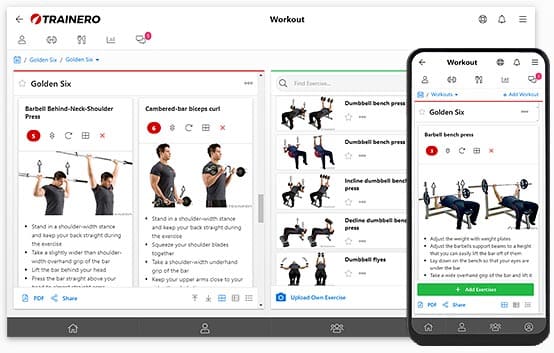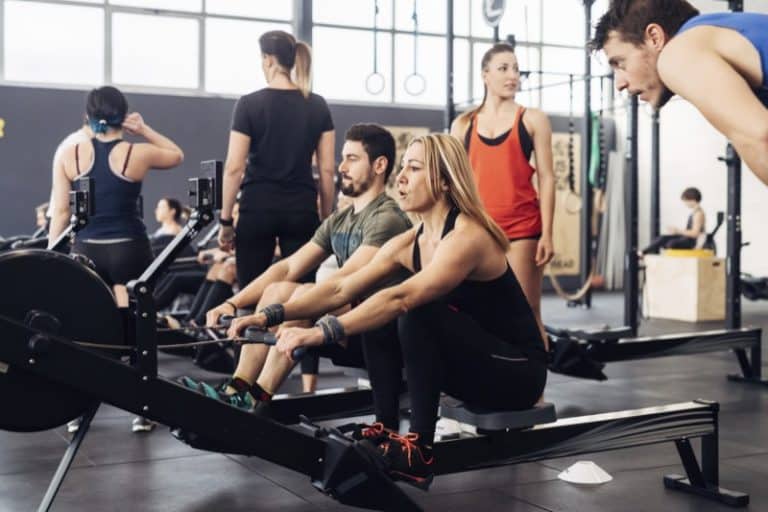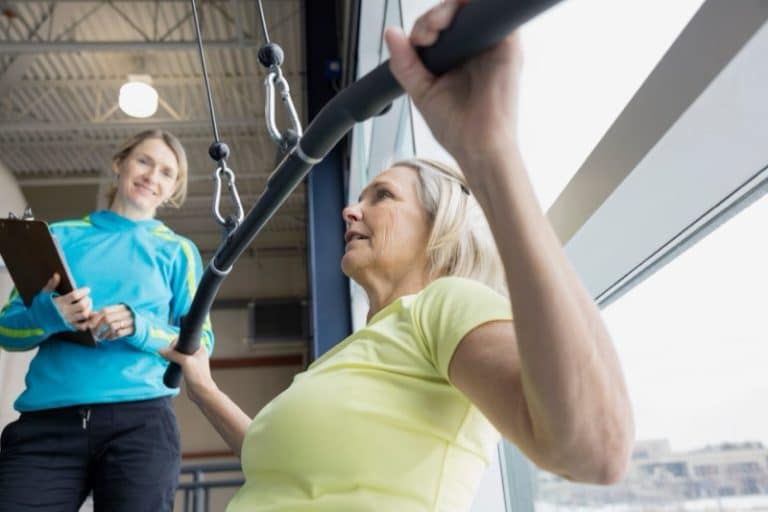Personal Training for Seniors: A Guide for Trainers
As the population of older adults continues to grow, the demand for specialized personal training programs tailored to senior clients is on the rise. Personal trainers who focus on this demographic must understand the unique needs of older clients to design effective and safe workout routines. Personal training for seniors not only enhances their physical well-being but also significantly improves their quality of life. By prioritizing senior fitness, trainers can help seniors maintain mobility, strength, and independence, ultimately fostering a more active and fulfilling lifestyle. This guide aims to provide trainers with the necessary insights and tools to effectively work with seniors.
Understanding the Unique Needs of Senior Clients
Working with seniors requires a deep understanding of their unique needs, which differ greatly from those of younger clients. Older adults often face age-related challenges such as decreased bone density, loss of muscle mass, and reduced range of motion. As a personal trainer for seniors, it is essential to consider these factors when designing exercise programs. Senior clients may also be dealing with chronic conditions like osteoporosis or arthritis, which necessitate personalized and cautious approaches to fitness training. By acknowledging these unique needs, trainers can create safe and effective training sessions that enhance the overall health and wellness of elderly clients.

Unlock your fitness potential with Trainero! Get a 14-day free trial and access personalized workout plans, expert coaching, and progress tracking—all in one app. No commitments, just results. Start your free trial today and take your fitness journey to the next level!

Physical Considerations for Older Clients
When working with older clients, personal trainers must be mindful of the physical considerations that come with age. Senior clients often experience diminished mobility and flexibility, which can impact their ability to perform certain exercises. Fitness trainers should focus on improving the range of motion and incorporating functional training exercises that enhance daily living activities. Resistance training, utilizing tools like resistance bands, can help build muscle mass and improve bone density, which are crucial for preventing injuries and maintaining strength. Understanding these physical considerations allows trainers to tailor workouts that address the specific needs and capabilities of their elderly clients.
Psychological Factors Affecting Senior Fitness
Beyond physical aspects, psychological factors play a significant role in senior fitness. Many older adults face cognitive decline, which can affect their motivation and engagement levels during training sessions. Personal trainers need to establish a personal connection with their clients, fostering a supportive and encouraging environment. By understanding the perceived exertion levels of seniors, trainers can adjust workout intensity to match their comfort and ability. Addressing psychological factors helps in maintaining motivation and ensuring that elderly clients stay committed to their exercise program, ultimately leading to improved health and quality of life.
Assessing Fitness Levels in Elderly Clients
Conducting a thorough fitness assessment is crucial when starting personal training with elderly clients. This evaluation helps in understanding the current fitness levels, mobility, and any existing health conditions that might affect their ability to exercise. Certified personal trainers should employ a variety of assessment tools to measure strength, flexibility, and cardiovascular endurance. These assessments not only guide the development of a personalized exercise program but also serve as benchmarks to track progress over time. By accurately assessing fitness levels, trainers can ensure that the training programs are both effective and safe for senior clients, promoting longevity and vitality.
Developing Effective Personal Training Programs
Creating Workouts for Seniors
Creating workouts for senior clients involves a careful balance between improving fitness and respecting the physical limitations inherent to aging. Personal trainers must develop exercise programs that prioritize safety while enhancing mobility, strength, and overall health. Emphasizing low-impact activities, such as walking, swimming, or cycling, can help seniors maintain cardiovascular health without putting undue stress on joints. Additionally, incorporating exercises that focus on balance and coordination is crucial to prevent falls. By tailoring workouts to accommodate the unique needs of older adults, trainers can help seniors achieve their fitness goals and improve their quality of life.

Unlock your fitness potential with Trainero! Get a 14-day free trial and access personalized workout plans, expert coaching, and progress tracking—all in one app. No commitments, just results. Start your free trial today and take your fitness journey to the next level!

Modifying Exercises for Senior Clients
Modifying exercises for senior clients is essential to ensure that each workout is both effective and safe. Fitness trainers must consider age-related factors such as reduced bone density and decreased muscle mass when adapting exercises. For example, using resistance bands instead of heavy weights can provide the necessary resistance while minimizing the risk of injury. Adjusting the range of motion in exercises can also accommodate joint stiffness and improve flexibility. By carefully modifying exercises, personal trainers can create inclusive training sessions that cater to the abilities of elderly individuals, allowing them to participate fully and confidently in their fitness journey.
Incorporating Range of Motion and Flexibility
Incorporating range of motion and flexibility into senior fitness programs is crucial for maintaining functional independence and enhancing daily living activities. Personal trainers should emphasize stretching exercises and activities that promote joint mobility, such as yoga or tai chi. These exercises not only improve flexibility but also aid in reducing stiffness and discomfort associated with aging. Encouraging seniors to engage in regular flexibility training helps preserve their ability to perform everyday tasks, ultimately enhancing their quality of life. By focusing on these elements, trainers can support older clients in achieving a more active and fulfilling lifestyle.
Strategies for Engaging Senior Clients
Building Rapport with Older Clients
Establishing a strong rapport with older clients is fundamental for successful personal training. Personal trainers working with seniors must prioritize building trust and understanding to create a supportive environment. This process begins with actively listening to senior clients, acknowledging their unique needs, and showing empathy towards their fitness goals. Personal trainers can foster a personal connection by engaging in open conversations, sharing experiences, and demonstrating patience during training sessions. By developing a rapport built on mutual respect and understanding, trainers can motivate elderly clients to remain committed to their fitness journey, enhancing their overall health and wellness.
Using Perceived Exertion to Gauge Workout Intensity
Monitoring perceived exertion is a vital strategy when designing exercise programs for senior clients. Unlike younger clients, older adults may have varying levels of physical capability and comfort, making perceived exertion a valuable tool for assessing workout intensity. Personal trainers can use scales, such as the Borg Rating of Perceived Exertion, to help elderly clients communicate their exertion levels during workouts. This approach allows trainers to adjust exercises in real-time, ensuring that the intensity is appropriate and safe. By tailoring workout intensity based on perceived exertion, fitness trainers can optimize the benefits of personal training for seniors, enhancing their fitness without risking injury.
Encouraging Consistency in Training for Seniors
Consistency is key to achieving long-term fitness goals, especially for senior clients. Personal trainers need to emphasize the importance of regular exercise in maintaining mobility, muscle mass, and overall health. By setting realistic and achievable goals, trainers can help seniors establish a routine that fits their lifestyle and capabilities. Encouraging consistency also involves creating a positive and enjoyable training experience, where progress is celebrated, and setbacks are viewed as opportunities for growth. By fostering a sense of accomplishment and purpose, personal trainers can inspire elderly clients to persist with their exercise programs, ultimately improving their quality of life and promoting longevity.
Becoming a Personal Trainer for Seniors
Qualifications and Certifications for Senior Fitness Specialists
To become a personal trainer specializing in senior fitness, obtaining the right qualifications and certifications is crucial. A certified personal trainer must be well-versed in the unique needs of older clients, ensuring they can design safe and effective exercise programs tailored to this demographic. Senior fitness instructors often pursue specialized certifications that focus on working with older adults, covering topics such as age-related changes, chronic conditions, and fall prevention. These certifications not only enhance a trainer’s knowledge but also build credibility, making them more appealing to potential senior clients. By investing in specialized certifications, trainers can better serve the elderly population and contribute to their health and wellness.
Continuing Education for Personal Trainers
Continuing education is vital for personal trainers who aim to stay current with the latest trends and research in senior fitness. The field of fitness training is ever-evolving, and trainers must continually update their skills to provide the best service to their senior clients. This ongoing education can include workshops, seminars, and advanced courses that delve deeper into topics like resistance training, flexibility, and cognitive decline. By staying informed about new exercise techniques and safety protocols, fitness trainers can enhance their training programs, ensuring they meet the evolving needs of elderly clients. Continuous learning not only boosts a trainer’s expertise but also demonstrates their commitment to helping seniors improve their quality of life.
Marketing Yourself as a Personal Trainer for Seniors
Effectively marketing oneself as a personal trainer for seniors is essential to attract and retain older clients. Trainers should highlight their expertise in senior fitness through various channels, such as social media, community workshops, and testimonials from satisfied clients. Emphasizing personalized exercise programs that address mobility, range of motion, and strength training can appeal to potential clients seeking specialized care. Networking with healthcare providers and senior community centers can also expand a trainer’s reach, connecting them with elderly individuals in need of fitness guidance. By showcasing their dedication to senior fitness and their capability to meet the unique needs of older adults, trainers can successfully build a thriving practice focused on improving the health and wellness of seniors.

Unlock your fitness potential with Trainero! Get a 14-day free trial and access personalized workout plans, expert coaching, and progress tracking—all in one app. No commitments, just results. Start your free trial today and take your fitness journey to the next level!











